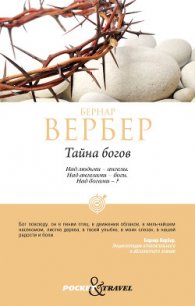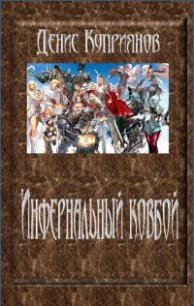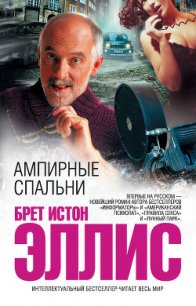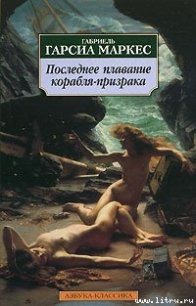Jurassic Park - Crichton Michael (книги бесплатно читать без .TXT) 📗
"Well," Morris said, "the Hammond Foundation is actually a rather mysterious organization." He pulled out a Xeroxed world map, marked with red dots, and passed it to Grant. "These are the digs the foundation financed last year. Notice anything odd about them? Montana, Alaska, Canada, Sweden… They're all sites in the north. There's nothing below the forty-fifth parallel." Morris pulled out more maps. "It's the same, year after year. Dinosaur projects to the south, in Utah or Colorado or Mexico, never get funded. The Hammond Foundation only supports cold-weather digs. We'd like to know why."
Grant shuffled through the maps quickly. If it was true that the foundation only supported cold-weather digs, then it was strange behavior, because some of the best dinosaur researchers were working in hot climates, and -
"And there are other puzzles," Morris said. "For example, what is the relationship of dinosaurs to amber?"
"Amber?"
"Yes. It's the hard yellow resin of dried tree sap-"
"I know what it is," Grant said. "But why are you asking?"
"Because," Morris said, "over the last five years, Hammond has purchased enormous quantities of amber in America, Europe, and Asia, including many pieces of museum-quality jewelry. The foundation has spent seventeen million dollars on amber. They now possess the largest privately held stock of this material in the world."
"I don't get it," Grant said.
"Neither does anybody else," Morris said. "As far as we can tell, it doesn't make any sense at all. Amber is easily synthesized. It has no commercial or defense value. There's no reason to stockpile it. But Hammond has done just that, over many years."
"Amber," Grant said, shaking his head.
"And what about his island in Costa Rica?" Morris continued. "Ten years ago, the Hammond Foundation leased an island from the government of Costa Rica. Supposedly to set up a biological preserve."
"I don't know anything about that," Grant said, frowning.
"I haven't been able to find out much," Morris said. "The island is a hundred miles off the west coast. It's very rugged, and it's in an area of ocean where the combinations of wind and current make it almost perpetually covered in fog. They used to call it Cloud Island. Isla Nublar. Apparently the Costa Ricans were amazed that anybody would want it." Morris searched in his briefcase. "The reason I mention it," he said, "is that, according to the records, you were paid a consultant's fee in connection with this island."
"I was?" Grant said.
Morris passed a sheet of paper to Grant. It was the Xerox of a check issued in March 1984 from InGen Inc., Farallon Road, Palo Alto, California. Made out to Alan Grant In the amount of twelve thousand dollars. At the lower corner, the check was marked CONSULTANT SERVICES/COSTA RICA/JUVENILE HYPERSPACE.
"Ob, sure," Grant said. "I remember that. It was weird as hell, but I remember it. And it didn't have anything to do with an island."
Alan Grant had found the first clutch of dinosaur eggs in Montana in 1979, and many more in the next two years, but he hadn't gotten around to publishing his findings until 1983. His paper, with its report of a herd of ten thousand duckbilled dinosaurs living along the shore of a vast inland sea, building communal nests of eggs in the mud, raising their infant dinosaurs in the herd, made Grant a celebrity overnight. The notion of maternal instincts in giant dinosaurs-and the drawings of cute babies poking their snouts out of the eggs-had appeal around the world. Grant was besieged with requests for interviews, lectures, books. Characteristically, he turned them all down, wanting only to continue his excavations. But it was during those frantic days of the mid-1980s that he was approached by the InGen corporation with a request for consulting services.
"Had you heard of InGen before?" Morris asked. "No."
"How did they contact you?"
"Telephone call. It was a man named Gennaro or Gennino, something like that."
Morris nodded. "Donald Gennaro," he said. "He's the legal counsel for InGen."
"Anyway, he wanted to know about eating habits of dinosaurs. And he offered me a fee to draw up a paper for him." Grant drank his beer, set the can on the floor. "Gennaro was particularly interested in young dinosaurs. Infants and juveniles. What they ate. I guess he thought I would know about that."
"Did you?"
"Not really, no. I told him that. We had found lots of skeletal material, but we had very little dietary data. But Gennaro said he knew we hadn't published everything, and he wanted whatever we had. And he offered a very large fee. Fifty thousand dollars."
Morris took out a tape recorder and set it on the endtable. "You mind?"
"No, go ahead."
"So Gennaro telephoned you in 1984. What happened then?"
"Well," Grant said. "You see our operation here. Fifty thousand would support two full summers of digging. I told him I'd do what I could."
"So you agreed to prepare a paper for him."
"Yes."
"On the dietary habits of juvenile dinosaurs?"
"Yes."
"You met Gennaro?"
"No. Just on the phone."
"Did Gennaro say why he wanted this information?"
"Yes," Grant said. "He was planning a museum for children, and he wanted to feature baby dinosaurs. He said he was hiring a number of academic consultants, and named them. There were paleontologists like me, and a mathematician from Texas named Ian Malcolm, and a couple of ecologists. A systems analyst. Good group."
Morris nodded, making notes. "So you accepted the consultancy?"
"Yes. I agreed to send him a summary of our work: what we knew about the habits of the duckbilled hadrosaurs we'd found."
"What kind of information did you send?" Morris asked.
"Everything: nesting behavior, territorial ranges, feeding behavior, social behavior. Everything."
"And how did Gennaro respond?"
"He kept calling and calling. Sometimes in the middle of the night. Would the dinosaurs eat this? Would they eat that? Should the exhibit include this? I could never understand why he was so worked up. I mean, I think dinosaurs are important, too, but not that important. They've been dead sixty-five million years. You'd think his calls could wait until morning."
"I see," Morris said. "And the fifty thousand dollars?"
Grant shook his head. "I got tired of Gennaro and called the whole thing off. We settled up for twelve thousand. That must have been about the middle of '85."
Morris made a note. "And InGen? Any other contact with them?"
"Not since 1985."
"And when did the Hammond Foundation begin to fund your research?"
"I'd have to look," Grant said. "But it was around then. Mid-eighties."
"And you know Hammond as just a rich dinosaur enthusiast."
"Yes."
Morris made another note.
"Look," Grant said. "If the EPA is so concerned about John Hammond and what he's doing-the dinosaur sites in the north, the amber purchases, the island in Costa Rica-why don't you 'ust ask him about it?"
"At the moment, we can't," Morris said. "Why not?" Grant said.
"Because we don't have any evidence of wrongdoing," Morris said. "But personally, I think it's clear John Hammond is evading the law."
"I was first contacted," Morris explained, "by the Office of Technology Transfer. The OTT monitors shipments of American technology which might have military significance. They called to say that InGen had two areas of possible illegal technology transfer. First, InGen shipped three Cray XMPs to Costa Rica. InGen characterized it as transfer within corporate divisions, and said they weren't for resale. But OTT couldn't imagine why the hell somebody'd need that power in Costa Rica."
"Three Crays," Grant said. "is that a kind of computer?"
Morris nodded. "Very powerful supercomputers. To put it in perspective, three Crays represent more computing power than any other privately held company in America. And InGen sent the machines to Costa Rica. You have to wonder why."
"I give up. Why?" Grant said.
"Nobody knows. And the Hoods are even more worrisome," Morris continued. "Hoods are automated gene sequencers-machines that work out the genetic code by themselves. They're so new that they haven't been put on the restricted lists yet. But any genetic engineering lab is likely to have one, if it can afford the half-million-dollar price tag." He flipped through his notes. "Well, it seems InGen shipped twenty-four Hood sequencers to their island in Costa Rica.
"Again, they said it was a transfer within divisions and not an export," Morris said. "There wasn't much that OTT could do. They're not officially concerned with use. But InGen was obviously setting up one of the most powerful genetic engineering facilities in the world in an obscure Central American country. A country with no regulations. That kind of thing has happened before."
There had already been cases of American bioenginecring companies moving to another country so they would not be hampered by regulations and rules. The most flagrant, Morris explained, was the Biosyn rabies case.
In 1986, Genetic Biosyn Corporation of Cupertino tested a bioengineered rabies vaccine on a farm in Chile. They didn't inform the government of Chile, or the farm workers involved. They simply released the vaccine.
The vaccine consisted of live rabies virus, genetically modified to be nonvirulent. But the virulence hadn't been tested; Biosyn didn't know whether the virus could still cause rabies or not. Even worse, the virus had been modified. Ordinarily you couldn't contract rabies unless you were bitten by an animal. But Biosyn modified the rabies virus to cross the pulmonary alveoli; you could get an infection just inhaling it. Biosyn staffers brought this live rabies virus down to Chile in a carry-on bag on a commercial airline flight. Morris often wondered what would have happened if the capsule had broken open during the flight. Everybody on the plane might have been infected with rabies.




